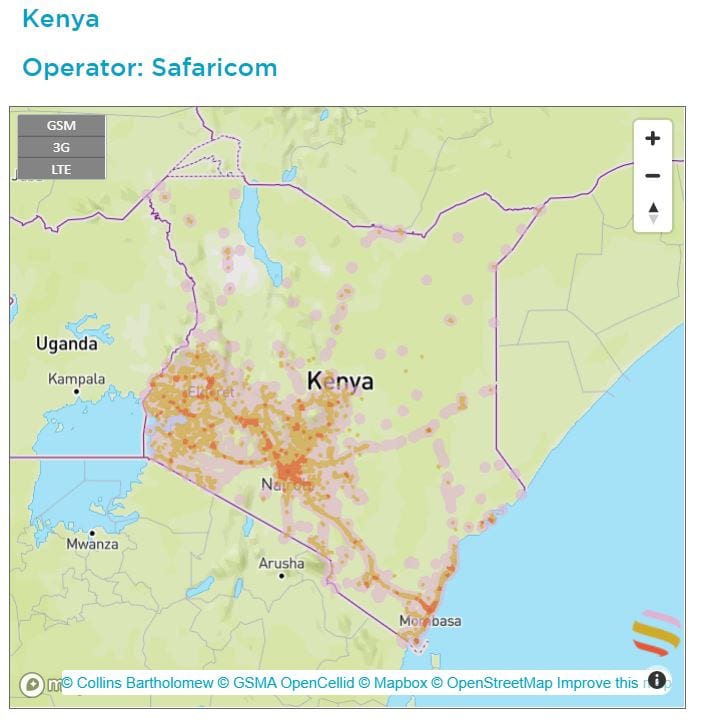The Story.
What technology in the field looks like for Village Enterprise.
How good is the internet connectivity in Kenya and Uganda?
Great question! Uganda was one of the first countries in Sub-Saharan Africa to gain full Internet connectivity. Kenya saw the construction of its first undersea fiber-optic cable in 2009 and now the country boasts four nationwide cables providing increased 4g and 3g across the country. Both countries have been able to provide access to data in all counties, although connectivity is inconsistent and is particularly spotty in the more rural communities.

How does your staff access the internet? Aren’t they working in remote villages?
Norbert Otim, a Village Enterprise business mentor, described how he and millions of other East Africans go about purchasing phone and tablet data. He told us that first, you must travel to a nearby town where you will find kiosks that are sponsored by different phone service providers. The next step is to enter your phone number into the machine, decide how much data you would like to buy, and feed cash into the machine. The machine will dispense a receipt with a code that you enter into your phone to activate your data. You are able to activate your data for a day, week, month, or year and although pricing options range, affordable options exist. Since very few areas have Wi-Fi or broadband connections in East Africa, the ability to use data allows rural communities to otherwise connect online. Our field staff use this process to purchase data for their tablets which they use to record and upload data through TaroWorks.
Wait, so what is TaroWorks?
TaroWorks is an offline mobile data collection app that enables users to collect data in areas with low or no network coverage and later sync and send that data to a designated online server. We use TaroWorks to collect programmatic, monitoring, and evaluation data. Business mentors and enumerators collect data offline in the field and later sync the data to an online database, Salesforce, where our monitoring and evaluation team manages, analyzes, and interprets this data. The integration of TaroWorks and Salesforce allows our team to create digital data collection forms and share case management records with everyone on our team.
Can grant funds be disbursed digitally?
Yes! Over the past few years, our team has mastered the mobile money transfer system. Mobile money is a digital banking system that provides transaction services through mobile phones. The service allows users to deposit money at any mobile money kiosk—located across the country—into an account linked to their SIM card. Users can securely transfer funds to other users, including sellers of goods and services, and redeem digital deposits for physical cash.
The digital disbursement process starts when eligible business groups fill out a grant application. The entrepreneurs then register a single mobile money number, a process that is facilitated by the business mentors and confirmed by field associates. Then the regional managers develop and share a disbursement schedule, which outlines when and where grants will be disbursed. The field associate does a second verification of the registered numbers and then enters all relevant data into a template. On the day of disbursement, the field associate submits the template to be approved by the finance manager. Money is then sent to the registered mobile money numbers in real-time. Entrepreneurs receive an SMS confirmation of the deposit, sign a hard copy receipt for their records, and walk to a mobile money agent. After the recipients prove their identity by providing a secret code, the agent initiates the cash withdrawal. In most cases, Village Enterprise works with the cell service providers, who conducted the registration of SIM cards for entrepreneurs’ phones, to complete the withdrawal process for them.
Why is the use of technology in the field so important?
This matters for a lot of reasons! By providing our business mentors with tablets, we are now able to rapidly change our training materials. Previously, we had to reprint 100-page manuals for each mentor which was not only wasteful but also fairly expensive. Now, every tablet has a digital training manual already embedded within it. The tablets give our mentors the ability to access data continually in the field and view dashboards that reflect business health, training attendance, and savings of our entrepreneurs. It also shows videos to entrepreneurs that better demonstrate concepts.
The implementation of the mobile money system has increased financial inclusion, an initiative that seeks to include individuals who have no access to banks or who can’t afford the required minimum deposits into the digital banking realm. There is also the matter of safety. We are not only able to avoid risks associated with the physical transportation of cash but also increase the traceability and accountability of our grant disbursements! Mobile money transfers take significantly less time and result in relatively lower operating costs for our team. Because our team has these previously established technological systems in place we are able to continue our work remotely, even under social distancing regulations, and react to Covid-19 restrictions in real-time.
Most importantly, the use of technology enables us to supplement our in-person training and mentoring while keeping the quality of program delivery and increasing our efficiency and therefore our cost-effectiveness.

